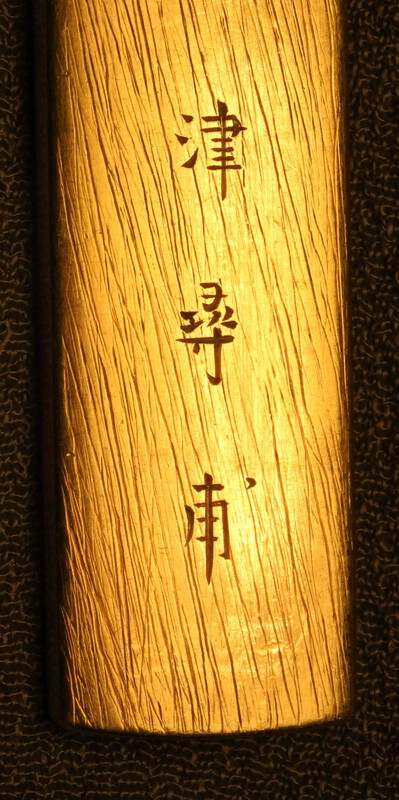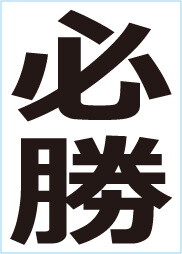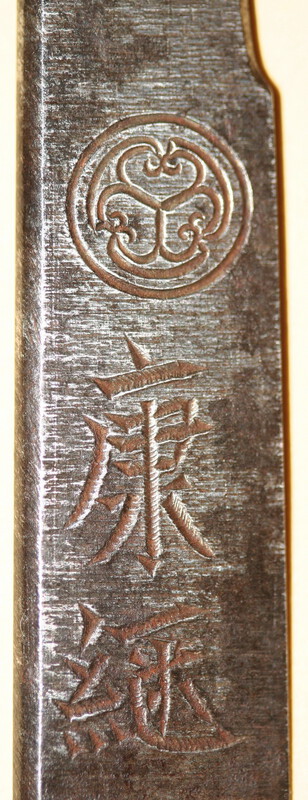-
Posts
2,821 -
Joined
-
Last visited
-
Days Won
27
Content Type
Profiles
Forums
Events
Store
Downloads
Gallery
Everything posted by Bazza
-
For those interested in such things I've just seen this: http://www.invaluable.com/auction-lot/kusari-katabira-chain-jacket-52-c-780436b8c4?utm_campaign=lot_abandonment&utm_medium=email&utm_source=bcemail&obem=HI_fjSGhutcWcIV7SLDbbV5nVzEjZREQsmliCAIuzuc%3D Bestests, BaZZa.
- 1 reply
-
- 1
-

-

Help First Time Buyer And Post.. Wanted Your Opinons!
Bazza replied to Reddawn27's topic in Military Swords of Japan
Take Grey Doffin's advice. Mine is keep looking - and study more. Go to Sword Shows and look at really good swords before buying anything. If you finally like traditionally made swords over Showato militaria I see here a case of future buyer regret... BaZZa. -
Thank you all for your comments. I’m still hoping someone “out there” has actually seen a Kazunori and comment on the quality. @ BIG - Peter Reusch That KAZUNORI is not the same smith. Your link shows a Seki Showato @Peter Bleed and others Thanks for the comments about the problems of stripping electroplated steel. This was discussed in the following thread: http://www.militaria.co.za/nmb/topic/8034-removing-chrome-plating/ @Stephen C The similarity in kanji style is very interesting, but I can make no intelligent or analytical comment about it. The “bigger story” will take some little while to put together. BaZZa.
-

Package From Namikawa Hebei Arrived
Bazza replied to SAS's topic in General Nihonto Related Discussion
Hey Steve, Great news. Can you share the same grade and the all up cost including postage - air I presume?? Bestests, BaZZa. -
I have a katana that has been nickel plated so nothing can be seen in the blade. The photos below show the signature and date. The kanji is very elegantly rendered, which indicates to me that the blade is likely to be of good to high quality. Does anybody have, or has seen, a sword by this smith KAZUNORI and can comment on the quality. It is fortunate that the tang hasn’t been messed with. The signature reads: SANYÔ MAYUMI SAN ROKU JÛ FUJIWARA KAZUNORI KORE o SAKU KÔKI NISEN ROPPYAKU NI NEN GO GATSU KICHI ? (May 1942) (EDIT: I cannot read the last character) Researching this blade I found a competition sword by this same smith KAZUNORI made in 1936 commissioned for a certain Michio Yuzawa. Below are the photos I found on the web on a dealer’s site that have since disappeared. The signature on the sword is almost the same as the sword above: 三陽真弓山麓藤原一則謹造之 SANYÔ MAYUMI SAN ROKU FUJIWARA KAZUNORI KIN KORE o SAKU and dated 昭和十一年八月十日(August 1936) The complete uramei is: 贈内務次官湯沢三千男殿昭和十一年八月十日参木晋七郎 Below are photos of the tang and one of the hada. Although low resolution these photos immediately suggested to me that this swordsmith KAZUNORI is a smith of repute. What I am seeking is opinions on whether or not my nickel plated blade is worth polishing. Best regards, Barry Thomas (aka BaZZa) (EDIT: There is a bigger story to these swords that I'll cover in another post)
-
Looks like the kind of sword Keanu Reeves might use in his next movie re-writing Japanese history (just finished watching "RONIN"...). A friend long ago had a large wakizashi (Oo-tanto??) made I think by a high ranking samurai (so signed). The blade had a well-done horimono of a snake. A visiting Japanese collector of the time commented that it was not done by a horimonoshi, but more likely a mirror maker. A very interesting sword. I still have a full-length oshigata I made somewhere in my chaotic storage system. I'll try and find it and put it up for this discussion. BaZZa.
-
Darcy and all, I agree completely with Darcy, but this is a world of hard knocks. The real, down to earth, point for anybody - ANYBODY- venturing into Nihonto as a Greenfields "hobby" is that: Don't spend the money expecting to get it back. This is Art at its best and worst. Buy Nihonto as if you expect to lose money, therefore don't spend if you can't afford it. This is very hard news for newbies and anybody with a heartfelt passion for Nihonto, very hard, but it is pretty much a universal truth IMHO. One just cannot help all the Newbies on their journey of discovery. I know, because as a mere sarariiman in my time of 50+ years of passion its been a very rocky road. Newbies can't really be helped. They need to help themselves by absorbing the economic shocks that inevitably come with trawling for swords and use these experiences to build knowledge. None of this comes cheaply or without study effort - the cost of knowledge is huge. However, the joy of Nihonto is correspondingly large. The true friends I have made in Nihonto are a Treasure beyond price and they have made the journey priceless. Bestests, BaZZa.
-
Paul puts it beautifully. As an enthusiastic drinker of red wine (shiraz and durif in the main) I know a winemaker (my favourite winery) who has a personal cellar of 8,000 bottles!! Well, I ask you!!! The most I have ever had was 400 bottles sitting in an outside shed, so that I had to brave whatever weather was going to get a bottle. I really don't know where they went, but they went!!! Now, 10,000 swords. WOW. That's TEN Benkei hard at work!! The other side of this is that I once listed my collection to a person in Japan (a mere couple of dozen or less). The reply was "That's nice dear!!", but in Japan we don't collect like that. Most people interested in Nihonto have a very small number of swords, even only ONE sword, or none. It wasn't necessary to have a lot, or any, I was told, because it is so easy to go to museums and see and handle any number of top swords without owning them. Put down point taken. So we come back to 10,000 swords. So what?? Is there a point??? Simpleton that I am, I dunno... BaZZa.
-
Geraint, Pardon me expressing an opinion from just one photograph, but the tsuba you show is IMHO a usual brass one with a copper-coloured coating, a lacquer or some such. This indicates a very well-preserved koshirae. What gives me this impression is the wear on the tsuba point to the right of the release button in the image that shows a brass colour. Bestests, BaZZa.
-
I have seen different styles of negoro nuri and I offer here a picture of lacquer on a tanto saya I have that seems quite different to any other style I have seen. Best regards, BaZZa.
-
Begs the question - what happened to the swords???? BaZZa.
-
Looks like a cross-fertilisation matrix!!!! BaZZa.
-
Something is very, very wrong... Guidoemon is smiling - or is that smirking? I think the joke is on us!! BaZZa.
-
Oh, very delicious Jan!! I shall have to join that forum and put my teppo up. Thank you very much for the pointer. BaZZa.
-
Jan, I would love to see good detailed photos of your 400 year old gun. That's, say, ca1600 - 1620??? My 3 matchlocks ca 1800 all have signed stocks and the wood is in near pristine condition. How about a new thread on your very old matchlock?? BaZZa.
-
Hi Grev, The tsuba was papered perhaps 40+ years ago and I think the date was ca1680, certainly "early Edo". A polisher visiting from Japan 30-ish years ago held it and said "A real one"... BaZZa.
-
A very interesting thread. Here is my Namban tsuba that has an old NBTHK green paper. It has been presented in an earlier thread (2013), but for those new to Namban tsuba I add it here to augment the contributions. Bestests, BaZZa.
-
-
Steve, Thanks very much indeed for your translation of the "watch fob/badge". This information enabled my friend who owns it to effect a trade for a bajo zutsu that was found in a tin box in an old shed in the country. One never knows what will turn up in a collector's life. When good photos are taken of the pistol I'll present it to NMB members. I'd also like to acknowledge Piers Dowding for information on the pistol itself. My friend is not a Nihonto man, rather an eclectic collector of many things who remembers me when a Japanese artifact turns up. He writes: Hi BaZZa & thanks Heaps for everyone's time on all this. Unfortunately, I don't have the medal in hand (for better pictures), but when I do (within the next couple of weeks, hopefully), I will forward some good pictures of all angles. Once again, my gratitude to everyone who has contributed. Best wishes to all, BaZZa.
-
-
At the last Shinsa in Australia a participant informally put a "watch fob" to the Shinsa panel for translation. This object caused great excitement to the Shinsa panel who gave a translation in romaji. Can anyone please give an English translation of the Shinsa note for this object?? Best regards, Barry Thomas. aka BaZZa.
-
Worn by a samurai who patronised the House of the Rising Moon... BaZZa.
-
Hmmmm, everything that Ed M said. This tsuba has bothered me from first look. My take is that it is modern. The thin patina and wear on the high spots clearly suggest this. And to me it does have an obvious lack of age. Shinsa??? EDIT: A second look reminds me that the dewdrops have been individually inserted, so Stephen (below) I don't think a cast copy, but still modern IMHO. BaZZa.
-
Seeing this mei I wonder if the maker was the same artisan who made a kogatana in an en suite wakizashi koshirae I have. The tosogu are mumei Yoshioka late Edo, so it seems reasonable to presume the kogatana was made about the same time. Any information on the smith welcome. Bestests, BaZZa.
-
I have heard that top-end swords sell on a telephone call and not on the open market. BaZZa.














